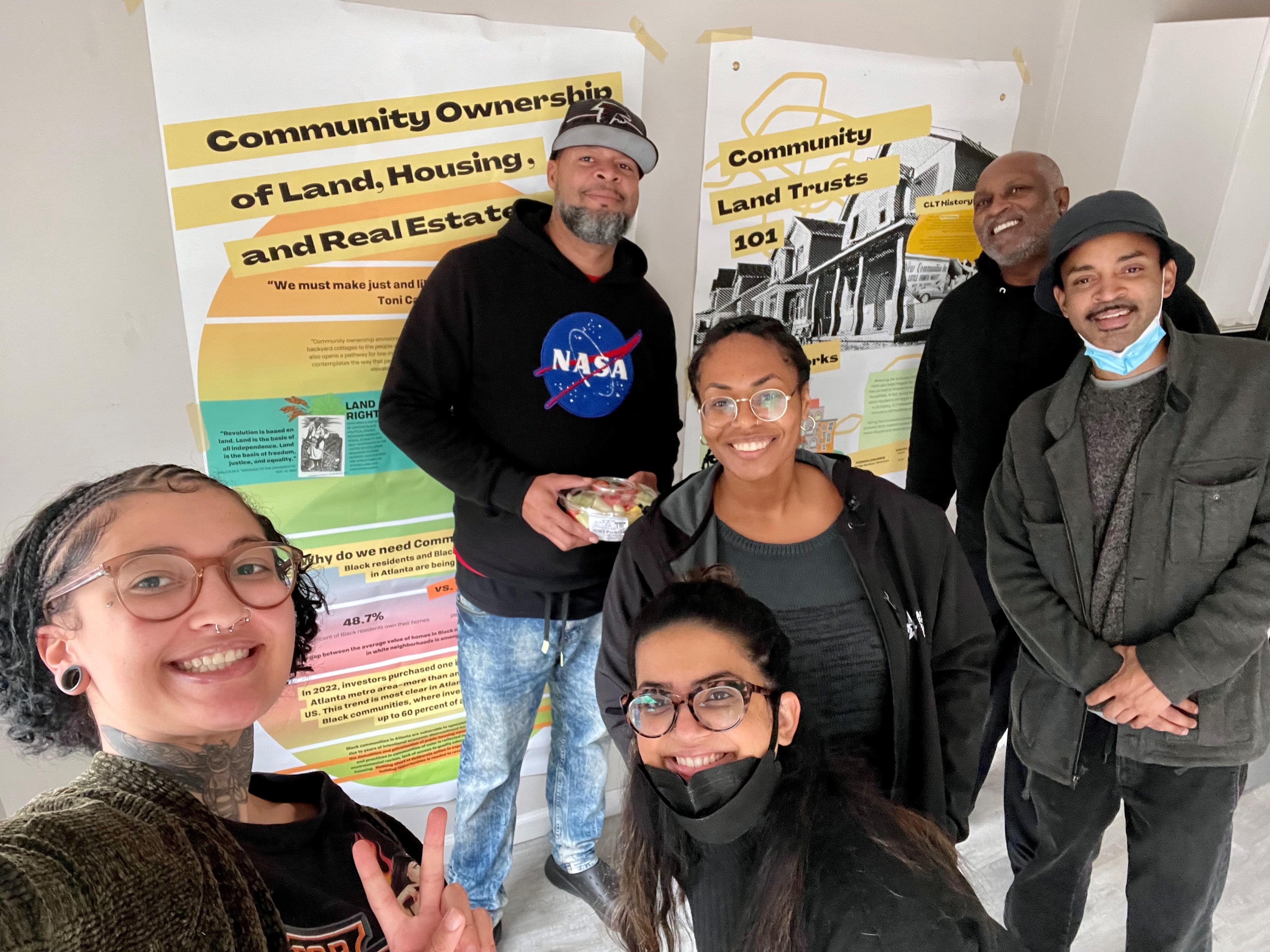
Community members tend to a community garden in the Hollygrove neighborhood of New Orleans. Photo: Peter Nahkid
Working for economic justice often reminds me of the myth of Sisyphus, who was condemned by the gods to eternally roll a rock up a mountain only for it to roll back down again. Sometimes you can win lasting victories, defend past gains, or at least reduce the harm that would otherwise have been done. But engaging in similar struggles—like state and federal budget issues—over and over, however necessary, can get tiresome.
Fortunately, these struggles aren’t the only option. We can also build positive alternatives. The newish term for this approach is “solidarity economy,” although examples of it are as old as humanity. The New Economy Coalition defines it as “a global movement to build a just and sustainable economy where we prioritize people and the planet over endless profit and growth.”
Examples include Indigenous approaches to survival and sustainability, cooperatives, community land trusts, credit unions, peer lending, mutual aid, community-led economic development, barter, community-supported agriculture, and fair trade products. Or the informal ways in which family, friends, and neighbors come together all the time to help each other.
Concrete example: I live on a dead-end one-lane country road. When a tree falls across it, the first one who is able to will bring the chainsaw. If someone has a wood stove, they catch a break. When bad weather hits, people check on each other. When a garden is abundant or chickens lay a lot of eggs or a hunter has good luck, these things are shared.

In Atlanta, AFSC, partners, and community members have formed a community land trust to ensure affordable housing for more residents.
Think of solidarity economy as an alternative both to capitalism and to authoritarian state control. While some programs might produce goods for the market, the main goal is community benefits over private gain. Unlike authoritarian state models, bureaucracy is minimized, democracy is maximized, and pluralism is encouraged.
Because these initiatives aren’t based on contesting for state power, they can sometimes thrive even in adverse political conditions. Probably the world’s most successful example is the Mondragon system of cooperatives in Spain that was formed in Basque country after the victory of Franco’s fascists. Today, Mondragon is a network of 95 separate and self-governing cooperatives that employ around 80,000 people.
Without necessarily using the term, AFSC has been engaged in solidarity economy work in the U.S. and around the world for over 100 years. This work began with distressed Appalachian coal communities in the 1920s and continues to this day.
Several U.S. AFSC programs demonstrate how solidarity economy looks in different places. Here are just a few examples:
- The Atlanta Economic Justice Program recently helped organize a community land trust, which aims to promote affordable housing and avoid displacement and gentrification.
- The Roots for Peace Program in Los Angeles and the Peace by Piece Program in New Orleans use community gardens to bring people together to meet basic needs, encourage learning, and organize for systemic change.
- The New Hampshire Program works with networks of community groups to provide immigrants with hospitality, financial support, and community engagement.
- In West Virginia, AFSC is part of a statewide Food for All coalition to improve food access while supporting local farms.
In addition to place-based efforts, AFSC is also building bridges with national and international solidarity economy coalitions to share our global experience and learn from partners around the world.
Maybe if these succeed, we won’t have to push as many rocks up the hill.

In Guatemala, community members in Nebaj, Quiché grow medicinal plants in a community garden that benefits all families. Luis Ochoa
Five guiding principles of the solidarity economy
(according to The U.S. Solidarity Economy Network*)
SOLIDARITY, COOPERATION, MUTUALISM.
EQUITY IN ALL DIMENSIONS.
PARTICIPATORY DEMOCRACY.
SUSTAINABILITY.
PLURALISM.
*The U.S. Solidarity Economy Network grew out of the U.S. Social Forum in 2007 and is affiliated with a larger international movement.
How to get involved
De-commodify what you can. Not everything has to be subject to money. Experiment with formal or informal mutual aid practices. These can include bartering; sharing time, resources, and skills; and receiving help yourself.
Consider self-provisioning. Are there things you can do, make, or grow for yourself and others? Possibilities include arts and crafts, music, gardening, preserving food, making bever-ages, raising chickens, do-it-yourself projects, and knitting.
Think about where your money goes. Consider moving it from big predatory financial banks to credit unions or locally owned financial institutions. When possible, spend yours on locally and sustainably produced goods and services and fair-trade items. Buy from worker-friendly businesses.
Support cooperative or alternative enterprises—or consider starting one. Community land trusts and similar efforts can be a way to preserve affordable housing and even support the local production of basic needs.
Research more possibilities. There are a huge number of resources and organizations that can help you learn more and find a niche to support this growing movement. Check out the websites of the U.S. Solidarity Economy Network and RIPESS, the Intercontinental Social Solidarity Economy Network.
Further reading:
- Seven ways to build the solidarity economy by US network coordinator (and former AFSC staffer) Emily Kawano
- Realizing the Solidarity Economy and System Change: A Basic Primer to the Solidarity Economy, by Nonprofit Quarterly

